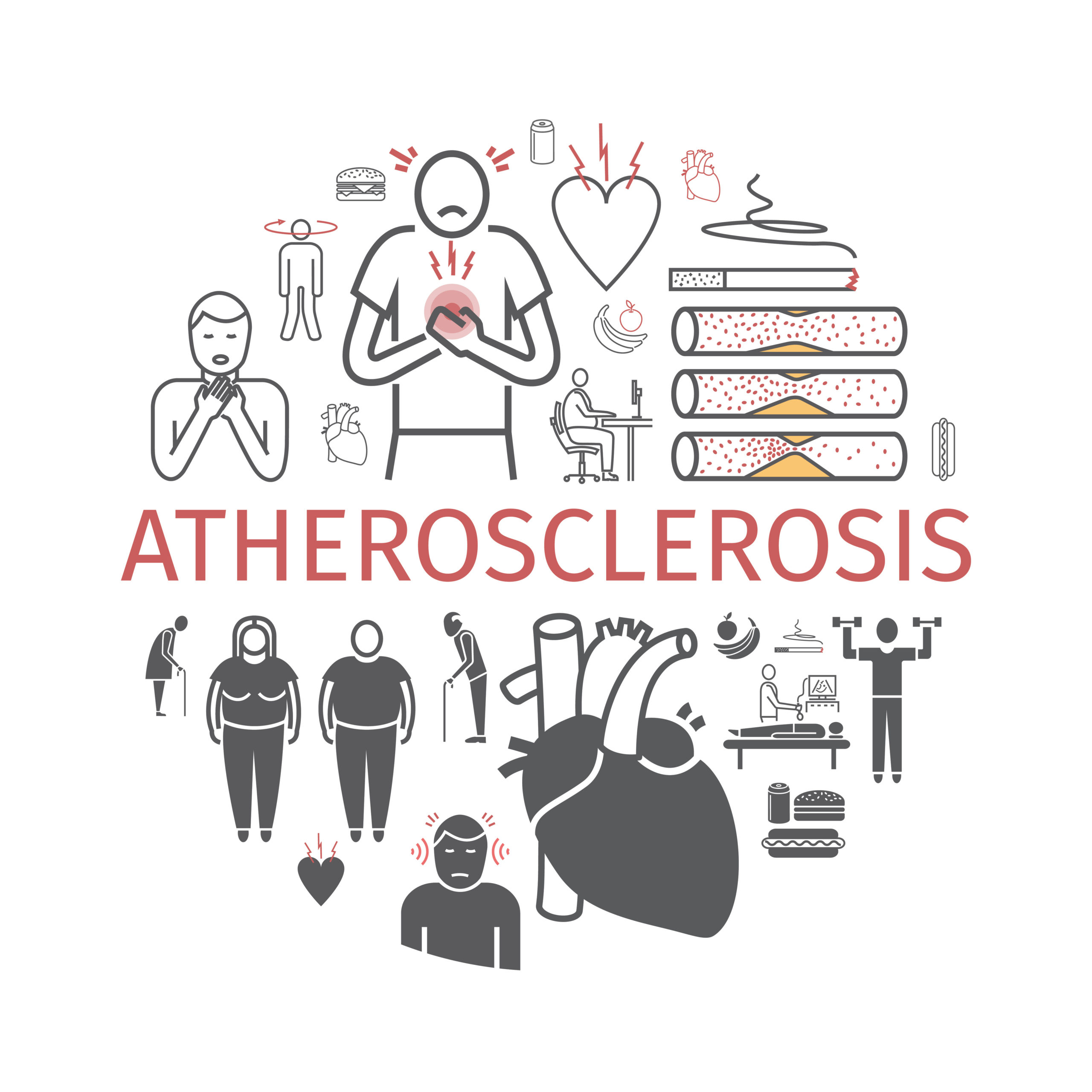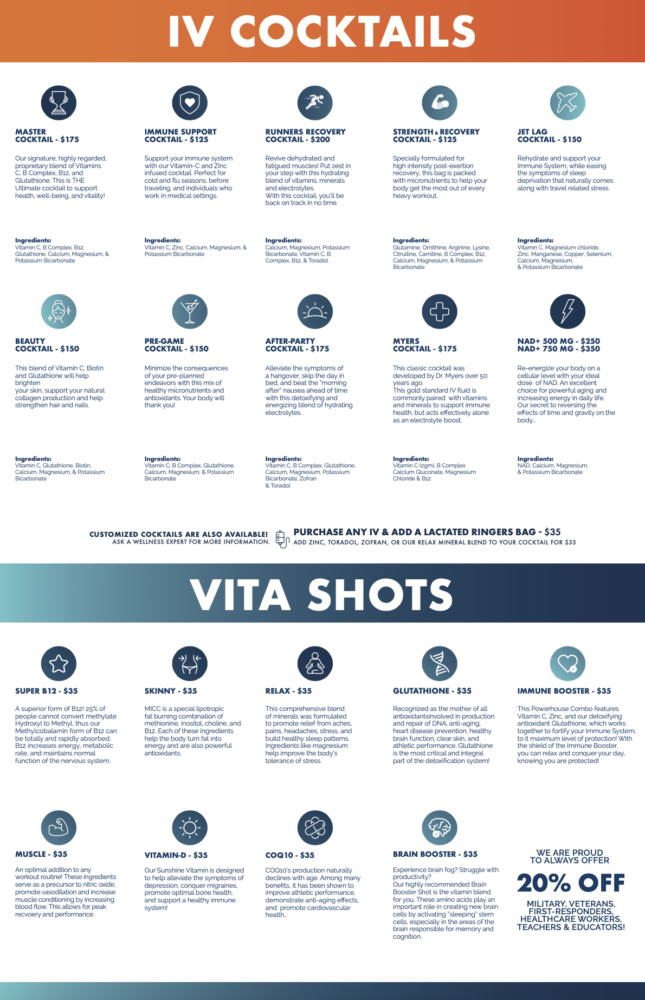Atherosclerosis:
Disease Overview:
Atherosclerosis is a progressive disease in which damaging plaques build up inside arterial walls. These plaques are made up of fat, cholesterol, calcium, and other substances that are found in your blood. These dangerous plaques restrict the necessary oxygen-rich blood flow to your body. If not treated, Atherosclerosis can lead to more serious problems such as heart attack, stroke, or even death.
When it comes to Atherosclerosis, most of the symptoms don’t show up until a blockage has occurred in the body. Some of the ones you can look out for are:
- Shortness of breath
- Fatigue
- Muscle weakness from lack of circulation
- Pain in leg or wherever there’s a blocked artery
The precise causes of Atherosclerosis aren’t fully known. According to the American Heart Association, it is a slowly progressing disease. It can start when you’re young and become more severe as you age. It may begin when certain contributing factors damage the delicate inner layers of the arteries. Some of them include:
- Smoking
- High Cholesterol
- High Blood Pressure
- High Sugar in the Blood
- Diabetes
Another factor to keep in mind is your own family history. Research has suggested that you may be more inclined to develop Atherosclerosis if there is a family history of the disease. It’s important to check with your doctor. Try to catch anything as early as possible that might be of concern.
When you meet with your doctor to discuss the different tests you may be able to do so that you can be diagnosed the right way:
- Angiography- with this test, a contrast dye is injected into the arteries to help the blockages show up on the X-rays. This will help make sure that the doctor knows exactly where the blockages are.
- Echocardiogram- this is a test that will take pictures of the heart valves so that it can measure the pumping action. It is painless.
- CT Scan- takes a picture of the inside of the body so that your doctor can see the hardening and narrowing of the large intestines.
- Ankle/brachial index- this test will compare the blood pressure in your ankle to the pressure in your arm. This way your doctor will be able to measure blood flow in your limbs.
- Exercise Stress Test- When you are exercising, your heart has to work harder to make sure your body stays healthy. This test will measure your heart function while you are active to see how much it can handle.
These tests will help your doctor understand what’s going on in your body a lot more and will be able to provide you with the right steps to becoming healthier.
There have also been studies suggesting that nutrients with antioxidant properties may be able to influence endothelial (tissue) dysfunction. These nutrients may help decreases the severity of Atherosclerosis.
Nutrient Research:
- Copper- Our bodies need copper to produce antioxidative enzymes. Copper helps with energy production, iron utilization, antioxidant defense, and much more.
- Coenzyme Q10- This is a molecule that is naturally produced in the body, but production declines as we age. It helps reduce blood pressure and improve blood flow. This molecule can help protect against oxidative stress. It may assist the heart reach higher levels of the vital energy source ATP.
With the availability of IV Therapy on the rise, it’s becoming one of the easiest and most efficient ways to get all the vitamins and nutrients that your body needs. With these vitamins and nutrients administered directly into the vein, you’re able to absorb 100%, offering a much a better effect. Make sure you visit our website or give us a call to schedule your consultation today.
Works Cited
American Heart Association. (n.d.). Atherosclerosis. Retrieved March 7, 2022, from American Heart Association: www.heart.org/en/health-topics/cholesterol/about-cholesterol/atherosclerosis







